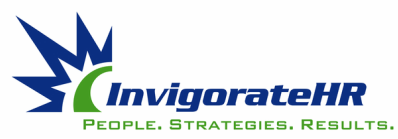 Neurodiversity is a relatively new term that refers to people who have dyslexia, autism, ADHD, dyspraxia and other neurological conditions. These are “spectrum” conditions, with a wide range of characteristics, but share some common features in terms of how people learn and process information. Diversity in the workplace is widely accepted as being of benefit to both businesses and consumers. But while many companies have embraced the concept of building teams that include people from different genders, ethnicities, religions, sexualities and disabilities, some employment experts believe the practice of diversity in the workplace still hasn't fully included those with neurological conditions such as autism. In other words, many workforces have yet to become neurodiverse. Here are four areas where employers can make the best of a neurodiverse workforce. Recruitment. When recruiting make role descriptions as clear and concise as possible, avoiding jargon. Think about your interview process. For example, conventional face-to-face interviews may put candidates at a disadvantage because some candidates may have difficulty looking directly into the interviewer’s eyes which can be misinterpreted. This can put some neurodivergent people at a disadvantage, making it harder for them to demonstrate the skills and talent required in the job and often leading to them being excluded for roles that they might have been right for. Performance. Problems with underperformance are particularly likely to arise where managers are not aware of somebody’s neurological condition. Disclosure can be very helpful in preventing performance issues—but this needs to be handled carefully. A working environment in which employees are accepted and have the chance to play to their strengths is key. When dealing with performance issues, there is a need to be sensitive and conscious of the extent to which the employee needs guidance. Clear communications are crucial and these should focus on the individual’s strengths as well as their areas of weakness. Awareness. Greater awareness can help. Employers should be proactive in providing information on neurodiversity for those with neurological conditions as well as for those without. Employees with certain conditions are not always fully aware of the ways in which it might affect their ability to perform particular work tasks. Having access to a network of employees can be an invaluable source of information and support. Some aspects of good support and management apply to all employees generally, not just those with neurological conditions: giving clear instructions, ensuring staff are not overloaded, providing a working environment that is free of distractions. Allowing staff to channel themselves into tasks where they can excel rather than demanding that they continue to perform tasks that they are less suited to can benefit the majority. Placing too much emphasis on all-round generic competences can disadvantage staff with neurological conditions who may have highly specialized skills that could be harnessed differently.
Tailoring support to individuals. Other practices do require tailoring to the individual. Managers should lead discussions and suggest solutions, communicate unambiguously and give advance notice of changes so individuals can be fully prepared. In providing appropriate support, think not just about employees’ roles and their work environments but about a wider range of situations, such as training. And bear in mind that these are spectrum conditions and that characteristics will vary across individuals and how they cope with the associated characteristics of their condition over time. The potential merits of having a neurodiverse workforce should not be overlooked. Positive attributes commonly associated with this group include creativity, lateral thinking, bringing a “different perspective”, development of highly specialized skills and the consistency in tasks once mastered. Employers should be attuned to the possible benefits and competitive advantages that may be possible from having employees who think differently. After all, it would be a very boring workplace that lacked innovation if we all thought in exactly the same way. Sanchez, D.A. (2018). Inclusion Revolution! Neurodiversity in the Workplace! SHRM Magazine. Austin, R.D & Pisano, G.P. (2017). Neurodiversity as a competitive advantage. Harvard Business Review. Comments are closed.
|
Archives
December 2024
|

 RSS Feed
RSS Feed